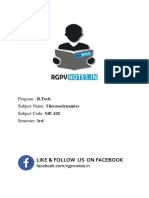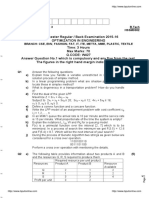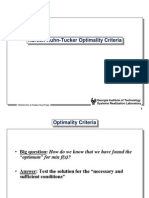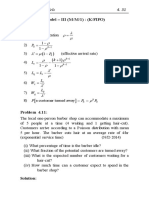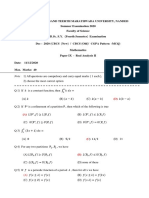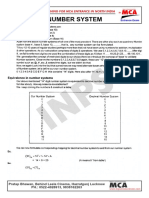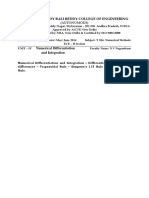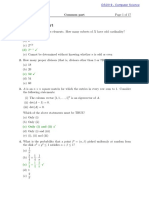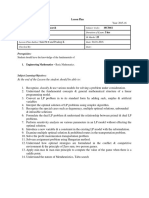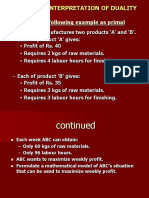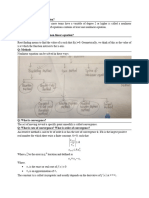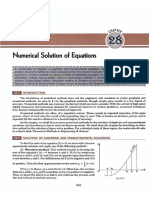0 ratings0% found this document useful (0 votes)
408 views56 pagesNumerical Methods
Uploaded by
Alok JangraCopyright
© © All Rights Reserved
We take content rights seriously. If you suspect this is your content, claim it here.
Available Formats
Download as PDF or read online on Scribd
0 ratings0% found this document useful (0 votes)
408 views56 pagesNumerical Methods
Uploaded by
Alok JangraCopyright
© © All Rights Reserved
We take content rights seriously. If you suspect this is your content, claim it here.
Available Formats
Download as PDF or read online on Scribd
You are on page 1/ 56
You might also like
- Question Papers - Linear Prog. and ApplicationsNo ratings yetQuestion Papers - Linear Prog. and Applications14 pages
- Deterministic Inventory Models Practice Questions0% (2)Deterministic Inventory Models Practice Questions3 pages
- Unit 1 - Thermodynamics - WWW - Rgpvnotes.inNo ratings yetUnit 1 - Thermodynamics - WWW - Rgpvnotes.in8 pages
- MA 4101 Applied Mathematics For Electronics EngineersNo ratings yetMA 4101 Applied Mathematics For Electronics Engineers4 pages
- NEP-B.Sc. (Mathematics) - Sem. I & II - (Syllbaus)100% (1)NEP-B.Sc. (Mathematics) - Sem. I & II - (Syllbaus)15 pages
- General Method - Binary Search - Finding The Maximum and Minimum - Merge Sort - Quick Sort - Selection Sort - Strassen's Matrix MultiplicationsNo ratings yetGeneral Method - Binary Search - Finding The Maximum and Minimum - Merge Sort - Quick Sort - Selection Sort - Strassen's Matrix Multiplications14 pages
- Hssm3302 Optimization in Engineering 2016No ratings yetHssm3302 Optimization in Engineering 20163 pages
- Btech 1 Sem Engineering Mathematics 1 Kas103t 2022No ratings yetBtech 1 Sem Engineering Mathematics 1 Kas103t 20222 pages
- Ma5160 Applied Probability and Statistics: For Syllabus, Question Papers, Notes & Many More100% (1)Ma5160 Applied Probability and Statistics: For Syllabus, Question Papers, Notes & Many More2 pages
- Queueing Models: M/M/1 (K/FIFO) AnalysisNo ratings yetQueueing Models: M/M/1 (K/FIFO) Analysis12 pages
- BSC SY Paper No.-IX Real Analysis-II With AnswerkeyNo ratings yetBSC SY Paper No.-IX Real Analysis-II With Answerkey5 pages
- Rr210501 Discrete Structures and Graph TheoryNo ratings yetRr210501 Discrete Structures and Graph Theory7 pages
- Real Analysis: (Review: Elementary Set Theory, Finite, CountableNo ratings yetReal Analysis: (Review: Elementary Set Theory, Finite, Countable3 pages
- MSC 2 Sem Statistics Operations Research 2024 2020No ratings yetMSC 2 Sem Statistics Operations Research 2024 20205 pages
- Magical Shortcut Methods For Competitive Exam (300 To 400)100% (1)Magical Shortcut Methods For Competitive Exam (300 To 400)20 pages
- Sample For Operations Research 11th Edition by Hamdy TahaNo ratings yetSample For Operations Research 11th Edition by Hamdy Taha50 pages
- Chapter - 4 - Root of Non Linear EquationsNo ratings yetChapter - 4 - Root of Non Linear Equations19 pages














